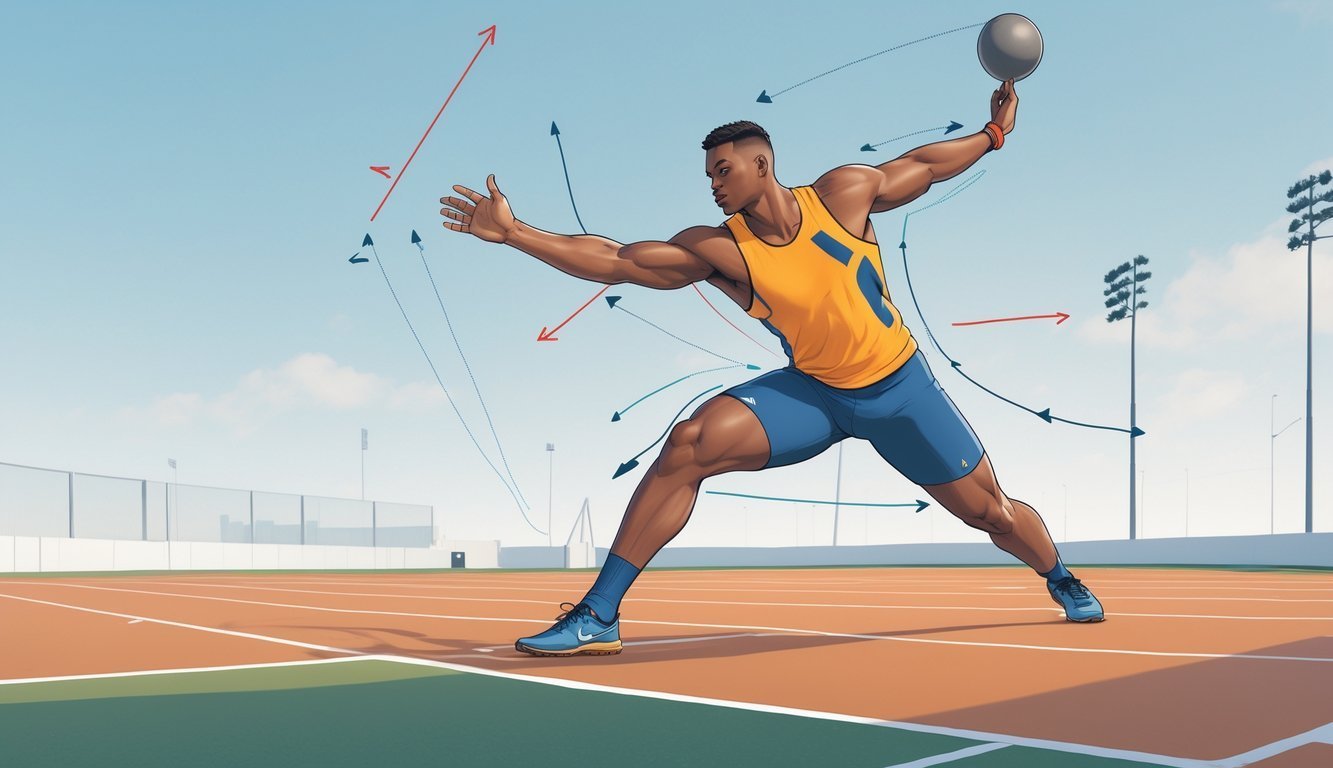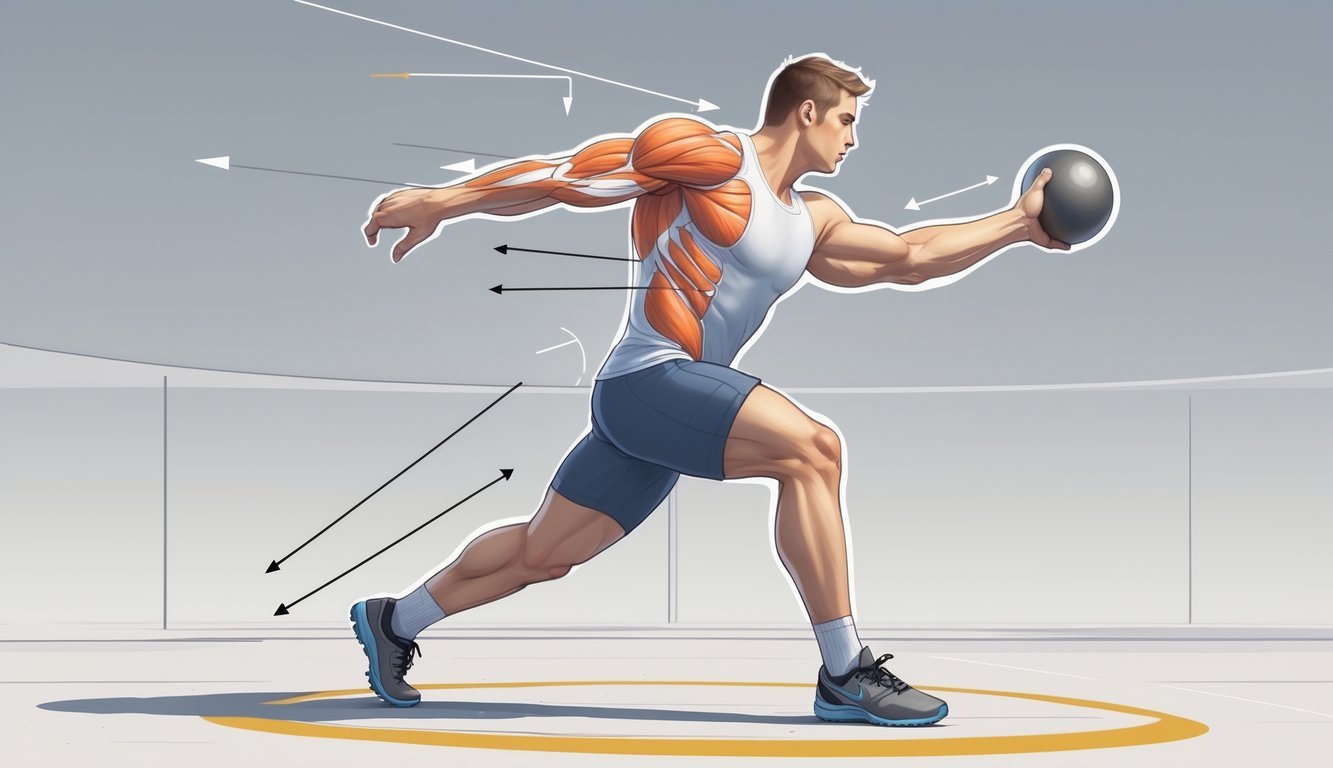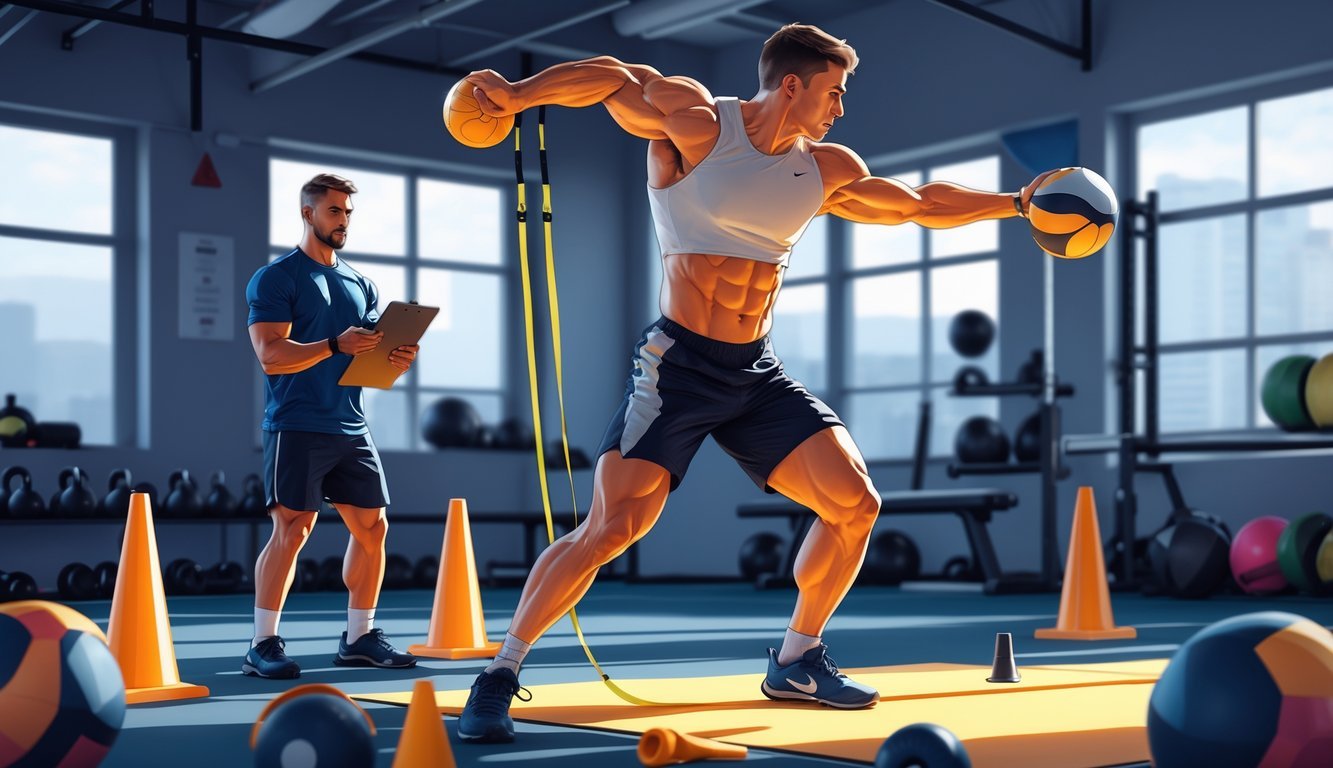PsychNewsDaily Publishers
100 Summit Drive
Burlington, MA, 01803
Telephone: (320) 349-2484
PsychNewsDaily Publishers
100 Summit Drive
Burlington, MA, 01803
Telephone: (320) 349-2484
The Standing Power Throw requires explosive power, proper technique, and coordinated movements from the legs, core, and upper body to maximize throw distance and ACFT scores.

If you want to get better at the Standing Power Throw for the Army Combat Fitness Test (ACFT), you’ll need more than just brute strength. The real secret? Mixing solid technique with focused training for your legs, core, and explosive power. That combo helps you launch the medicine ball farther and rack up a higher score.
To really improve, use your entire body. Start from a squat and push hard with your legs to launch the ball.
Wrapping your hands tightly around the ball stops it from slipping and gives you more control. If you practice this over and over, your throw will get stronger and more reliable.
Building power through squats, deadlifts, and sprints also helps you throw farther. With good practice, you’ll feel ready on test day and hit your ACFT goals.

To do well in the Standing Power Throw (SPT), you need to know why the event matters, get your form right, and watch out for common mistakes. Your stance, grip, and how you use your muscles all change your throw distance and your ACFT score.
The Standing Power Throw is part of the ACFT. You get a 10-pound medicine ball and throw it backward for distance.
This event tests explosive power in your legs, hips, core, and upper body. You want to throw the ball as far as you can while staying balanced and using good form.
How far you throw decides your score, but the minimum you need depends on your age and gender. You can’t just muscle your way through; speed and coordination really matter. The SPT shows how quickly your body can create force—pretty important for a lot of Army tasks.
Stand with your feet about shoulder-width apart. Grab the medicine ball with both hands, fingers wrapped underneath for a solid grip.
Bend your knees a little and push your hips back, kind of like you’re about to jump.
The main movement comes from a triple extension. You’ll extend your hips, knees, and ankles all at once, swinging the ball back and then throwing it overhead and behind you.
Your core and back muscles keep you steady. Push with your legs first, then guide the ball with your shoulders and arms.
Good form helps you stay balanced and put more force into the throw. Try to make your movements quick and smooth to get the most distance.
A lot of people try to throw using only their arms. That just wastes power and drops your score.
You have to use your hips and legs to drive the movement. If your grip is weak, the ball can slip out, so keep your fingers wrapped under the ball.
Losing your balance or leaning forward can mess up your throw, too. Keep your core tight and your shoulders in line.
Don’t bend your back too much; keeping a straight posture helps you transfer more force. And don’t rush—timing the explosive part of the throw makes a big difference in how far the ball goes.

To get better at the standing power throw, you’ll need to work on strength, explosive power, and mobility. Targeted exercises, dynamic moves, and a plan to track your progress all help. And honestly, recovery is just as important as the workouts.
Build up your strength with moves for your legs, core, and upper body. Squats and deadlifts hit your posterior chain and lower body—super important for the kind of power you need here.
Practice medicine ball throws to work on both power and coordination. These mimic the real movement and build strength in your upper body and core.
Overhead push presses and snatches teach your body to generate force fast, boosting your explosive strength.
Go for 3-5 sets of low reps (2-6 reps) with heavy weights. This approach helps you recruit more muscle fibers and put more power into your throw.
Plyometric exercises train your muscles and nerves to react quickly. Try box jumps, tuck jumps, and broad jumps to build power and coordination.
Add in plyometric push-ups to get your upper body firing fast—important for launching the ball. These moves train your fast-twitch fibers, which you’ll definitely need.
Do 3-4 sets of 5-8 reps, resting fully between sets so you stay explosive. Keep your movements snappy and controlled.
You need good flexibility and agility to move well and avoid injuries. Stretch your hips, hamstrings, and shoulders often so your body stays ready for action.
Work on mobility drills, especially for your hips and shoulders. This helps you transfer power smoothly during the throw.
Recovery matters for muscle growth and staying injury-free. Use light cardio, foam rolling, and take rest days to keep yourself fresh.
If you stay consistent with recovery, you’ll perform better over time.
Set clear goals, like bumping up your deadlift max or improving your box jump height. Track your exercises, weights, and reps so you can see real progress.
Mix up your week with both strength and plyometric sessions, plus rest days. For most people, three strength workouts and two plyometric sessions per week work well.
Test your standing power throw every so often to see if you’re improving. Keep notes on how you feel and perform so you know when to push harder or take it easy.

Getting better at the standing power throw means working on the right exercises, training the right muscles, and dialing in your technique. Tracking your progress and knowing how often to train also help a lot.
Power cleans build the explosive strength you need. Squats and medicine ball throws help you generate power in your hips and arms.
Work on your hips, core, shoulders, and legs. These muscle groups work together to create the force for a strong throw.
Keep your feet planted, stay balanced, and use a fast hip-and-arm motion to launch the ball. Don’t let your hips rise too much or round your back.
Absolutely. Kettlebell swings build hip power and explosiveness, both key for the throw. They also help with timing and coordination.
Train two to three times a week, focusing on quality over quantity. Rest enough between sets to keep your form sharp and your power high.
Check your throw distance every so often and jot down any changes you notice.
Keep a training log. Write down the exercises you do, your reps, and how far you throw each time. That way, you’ll actually see your progress, not just guess at it.